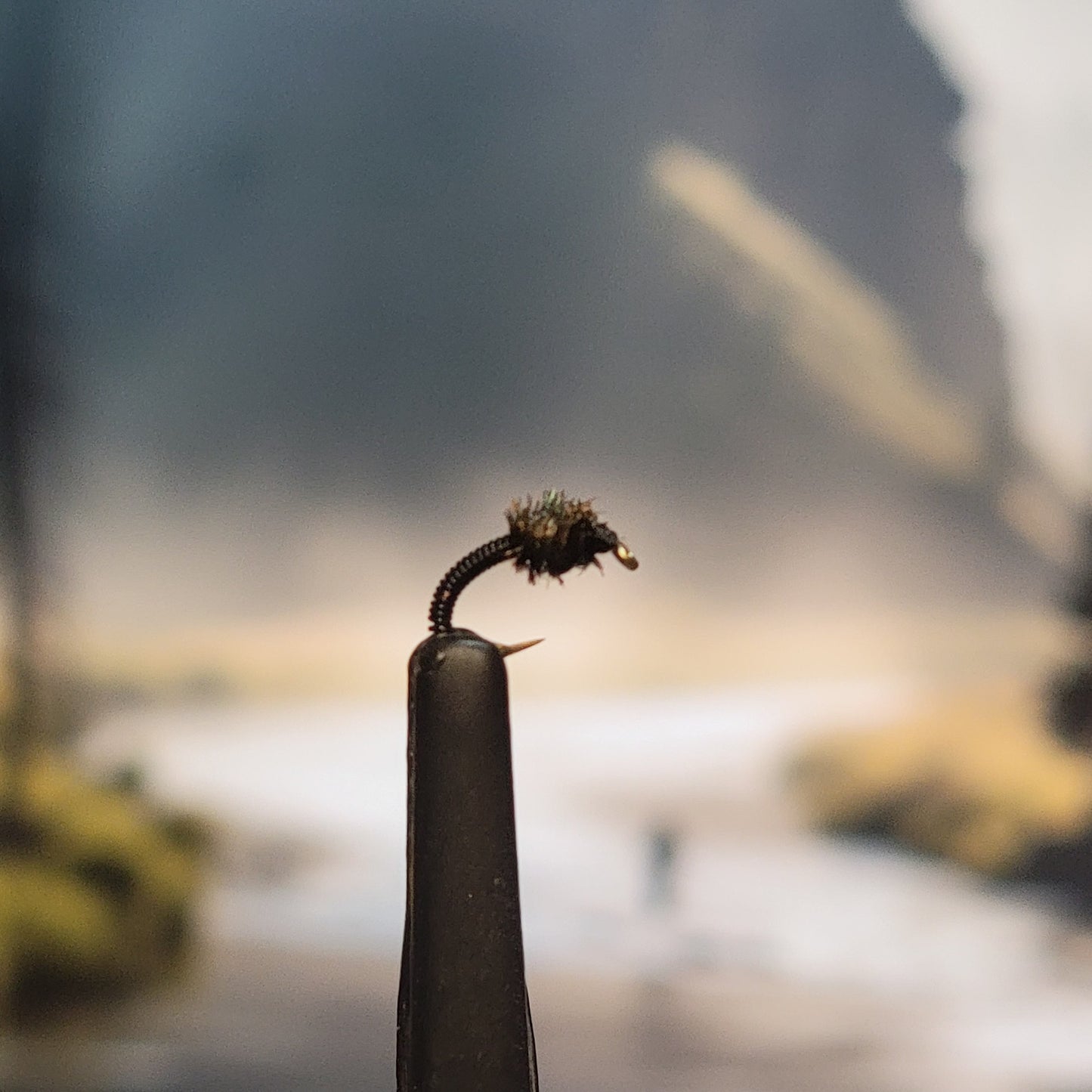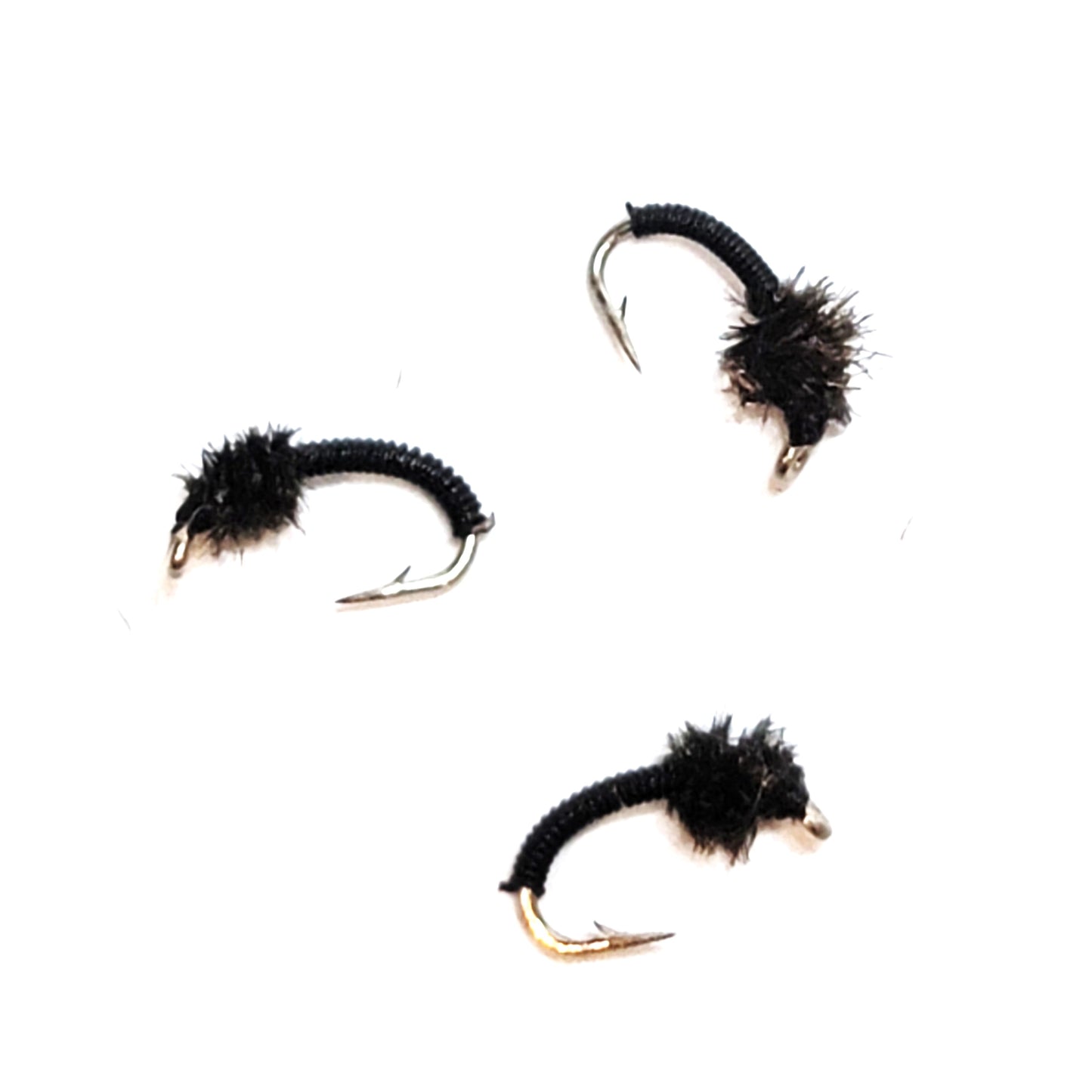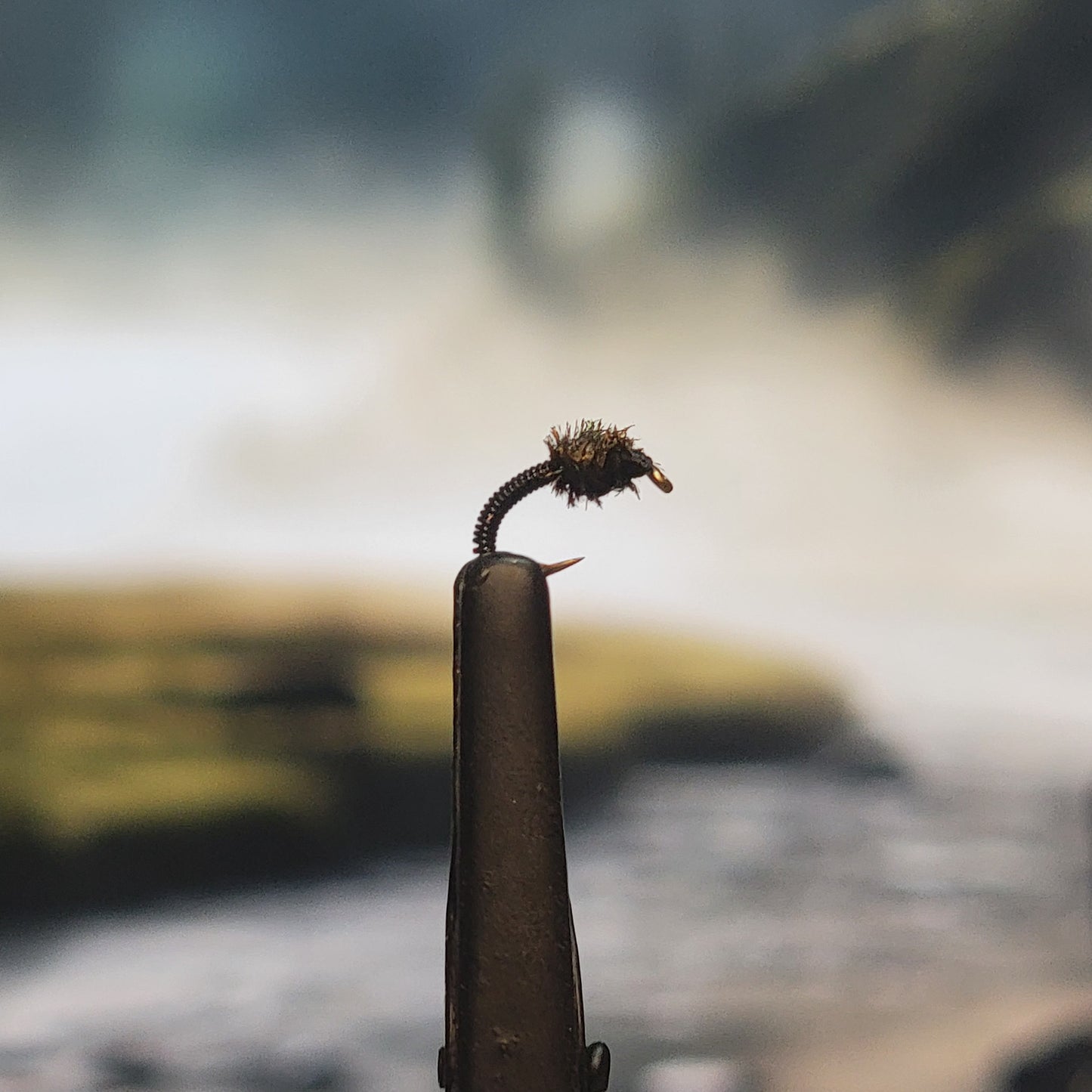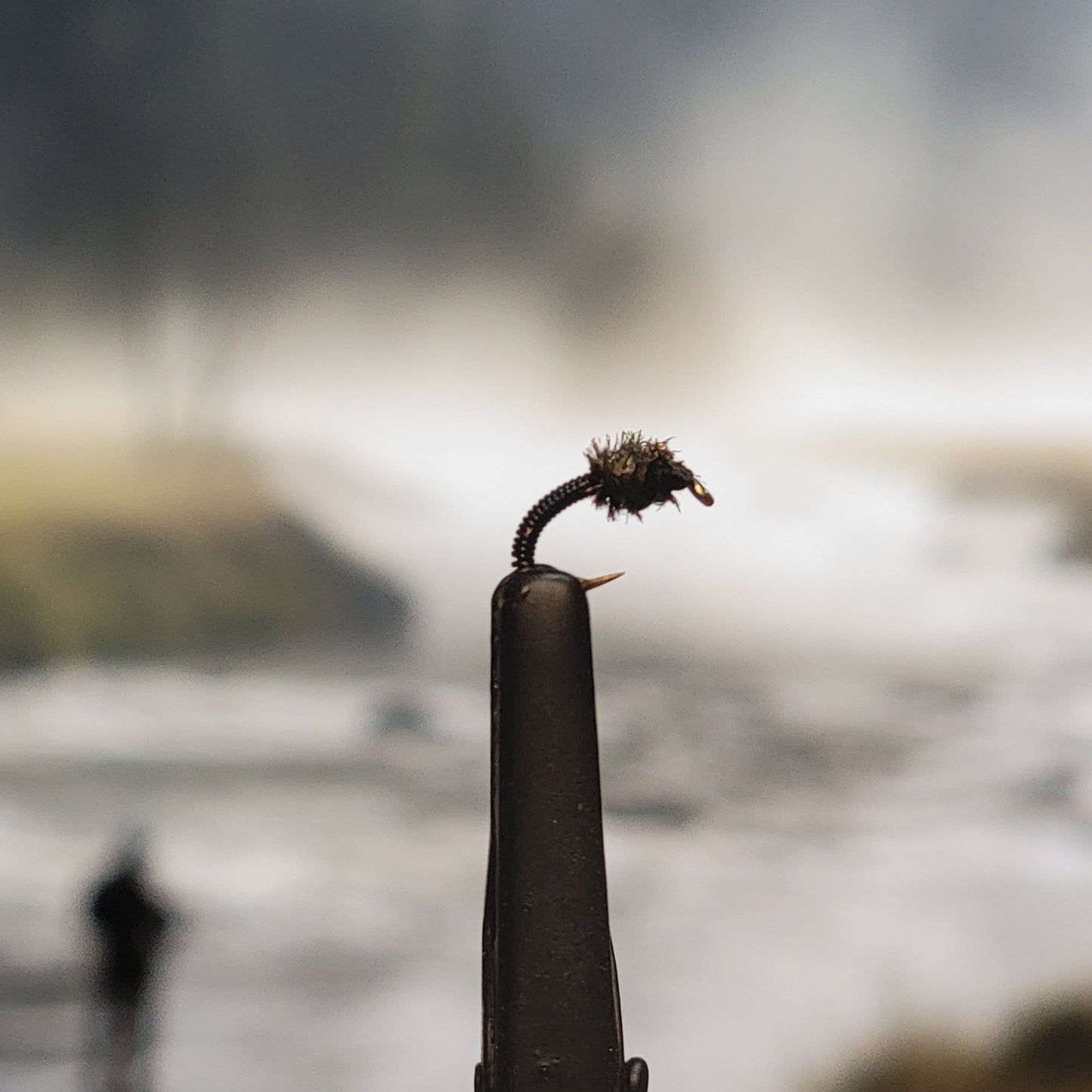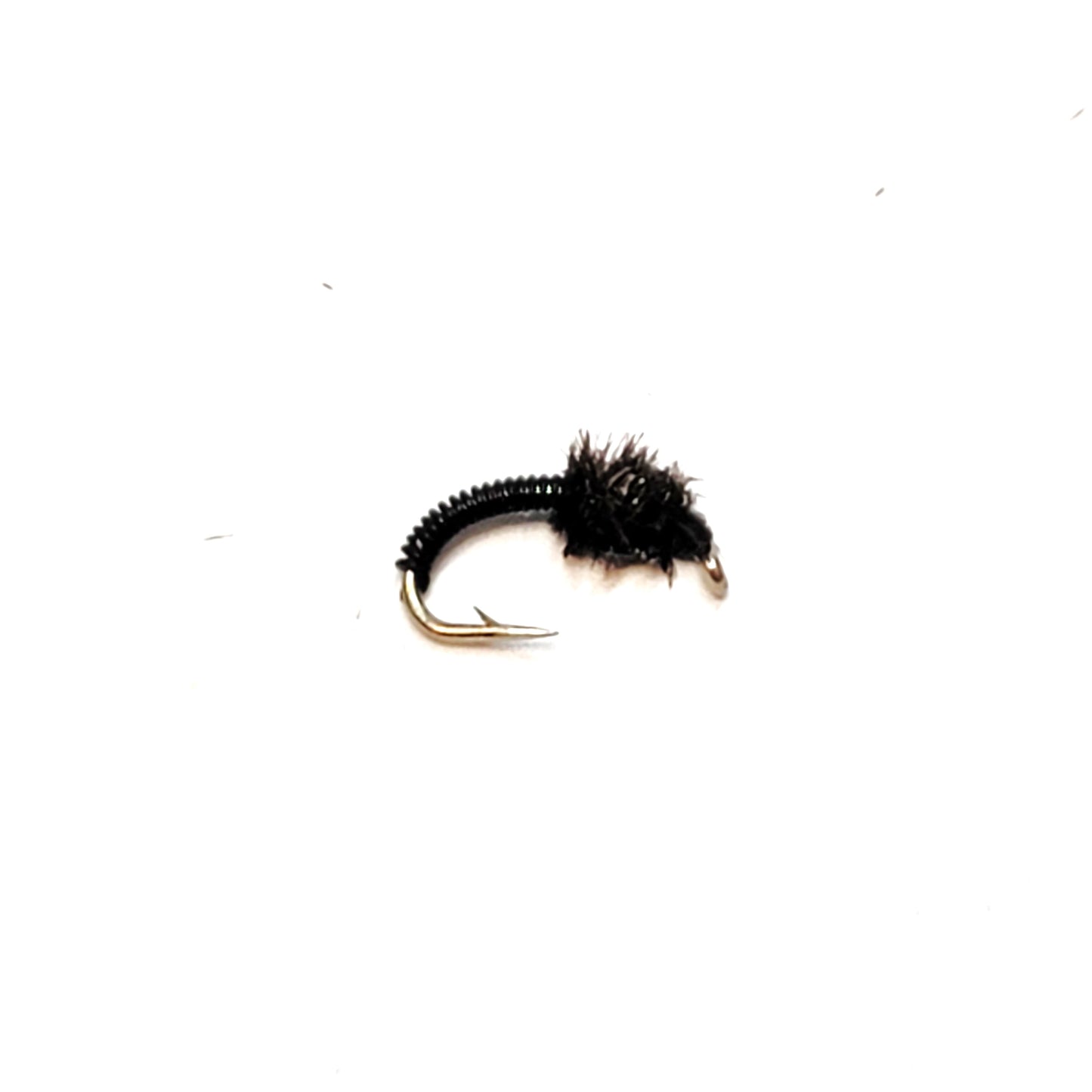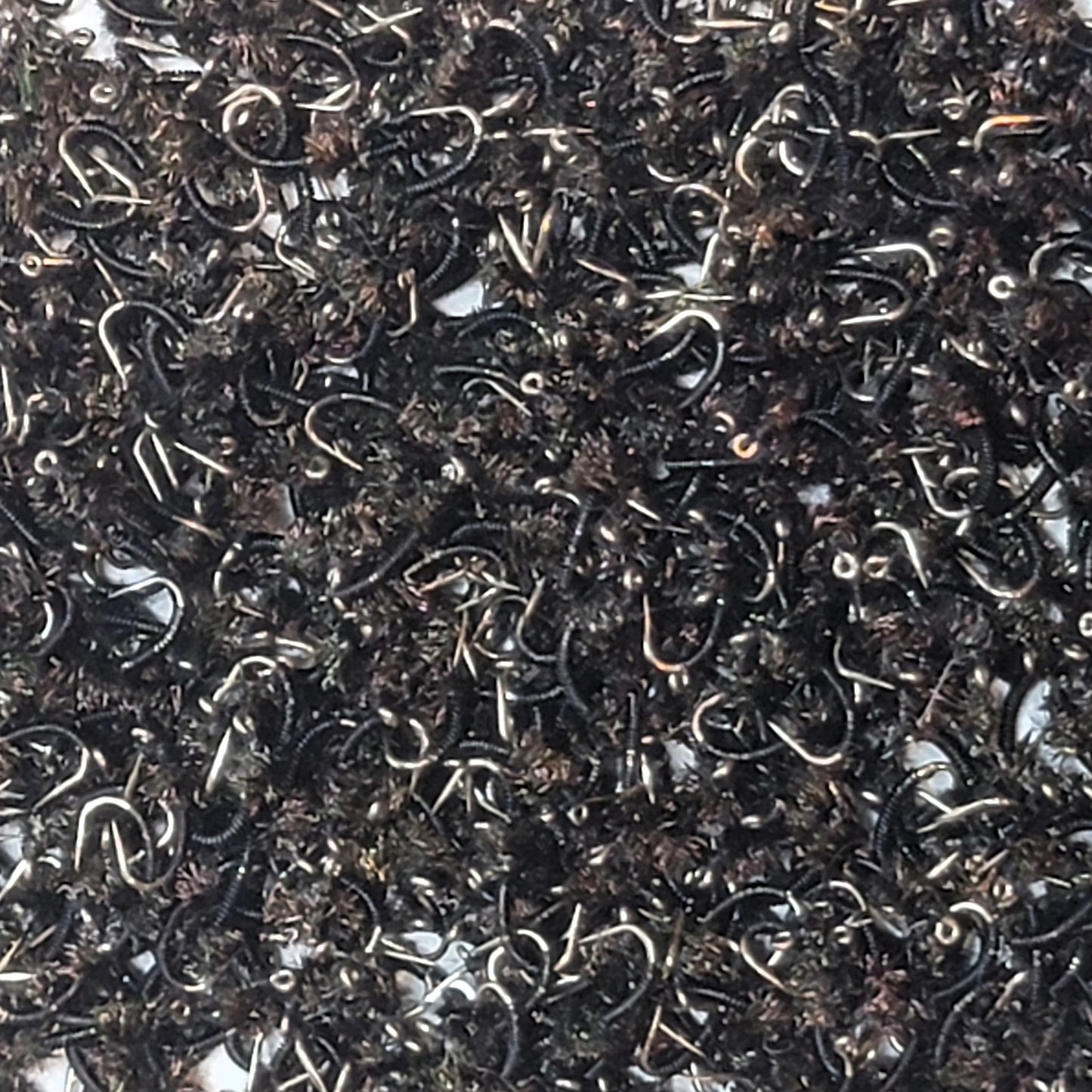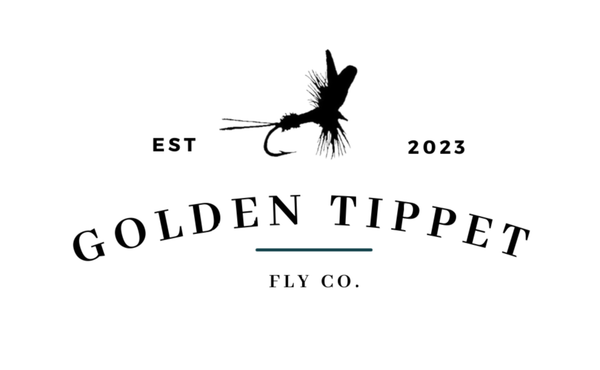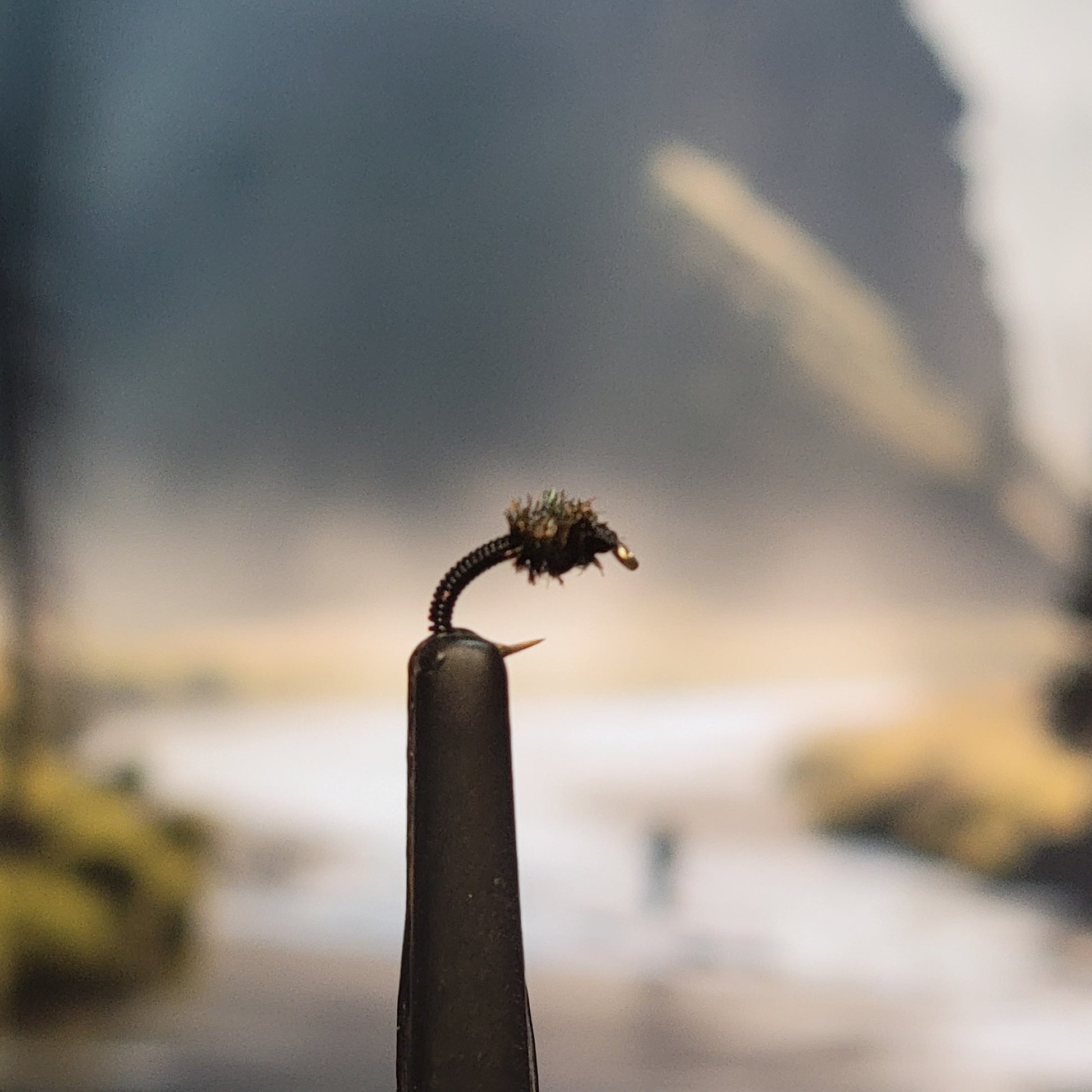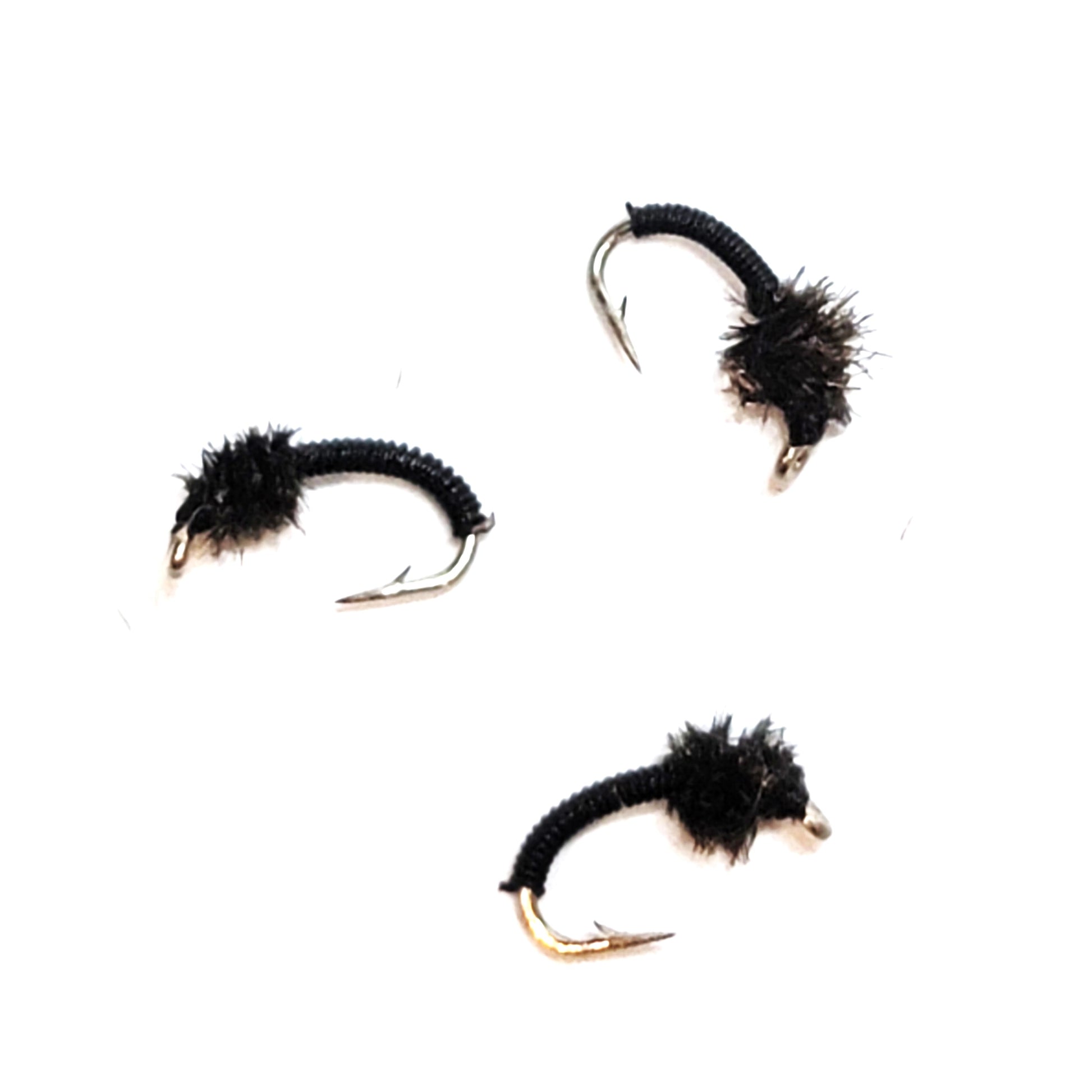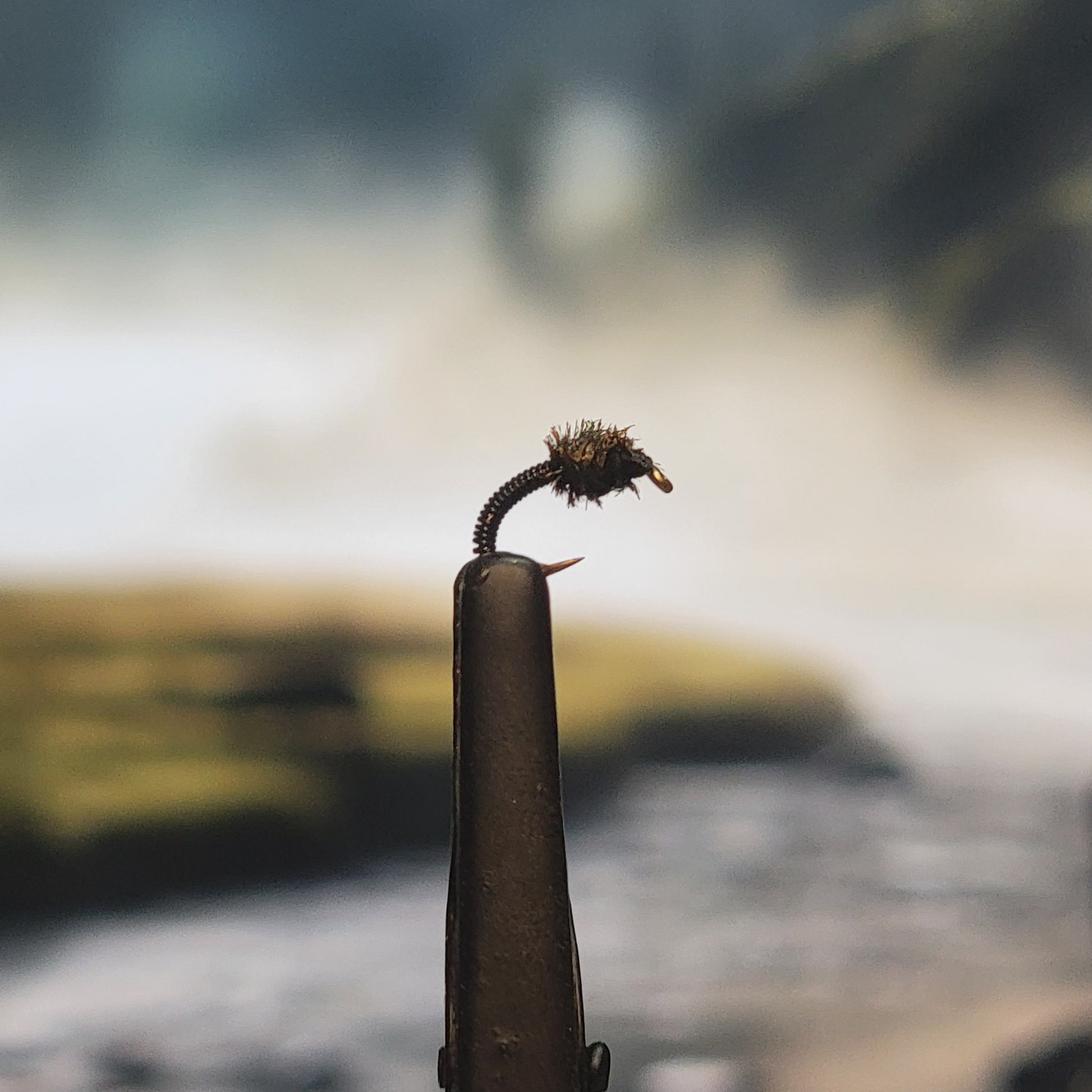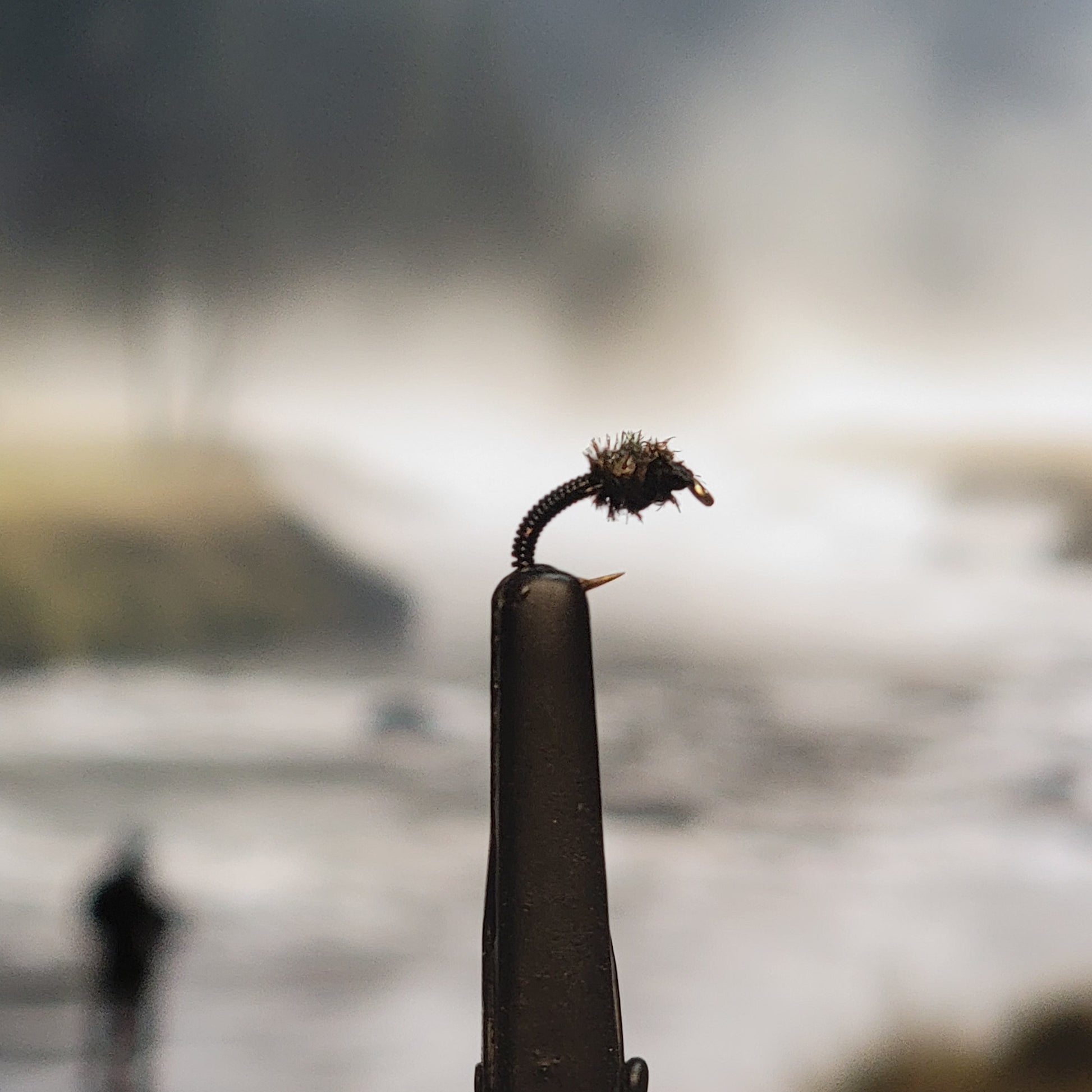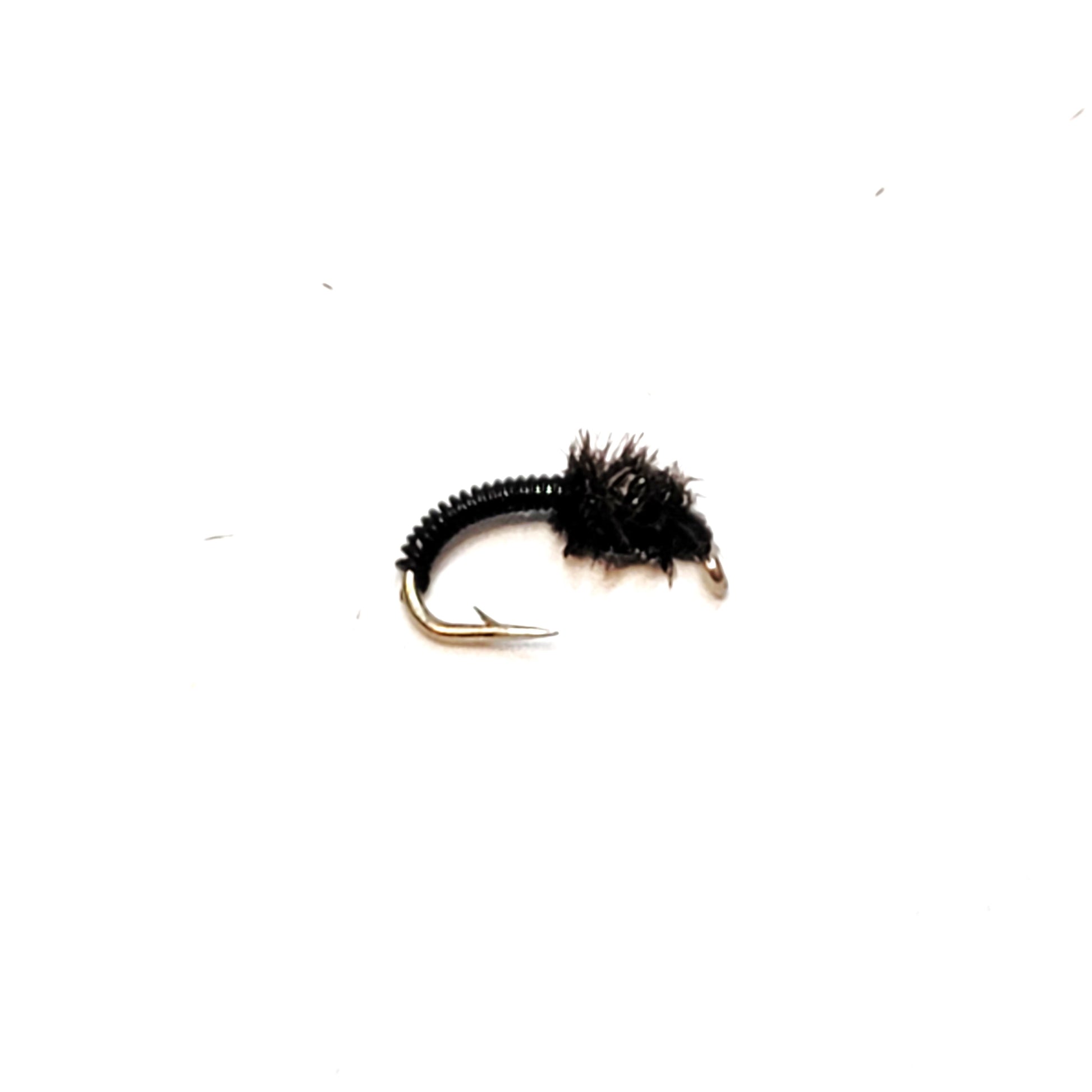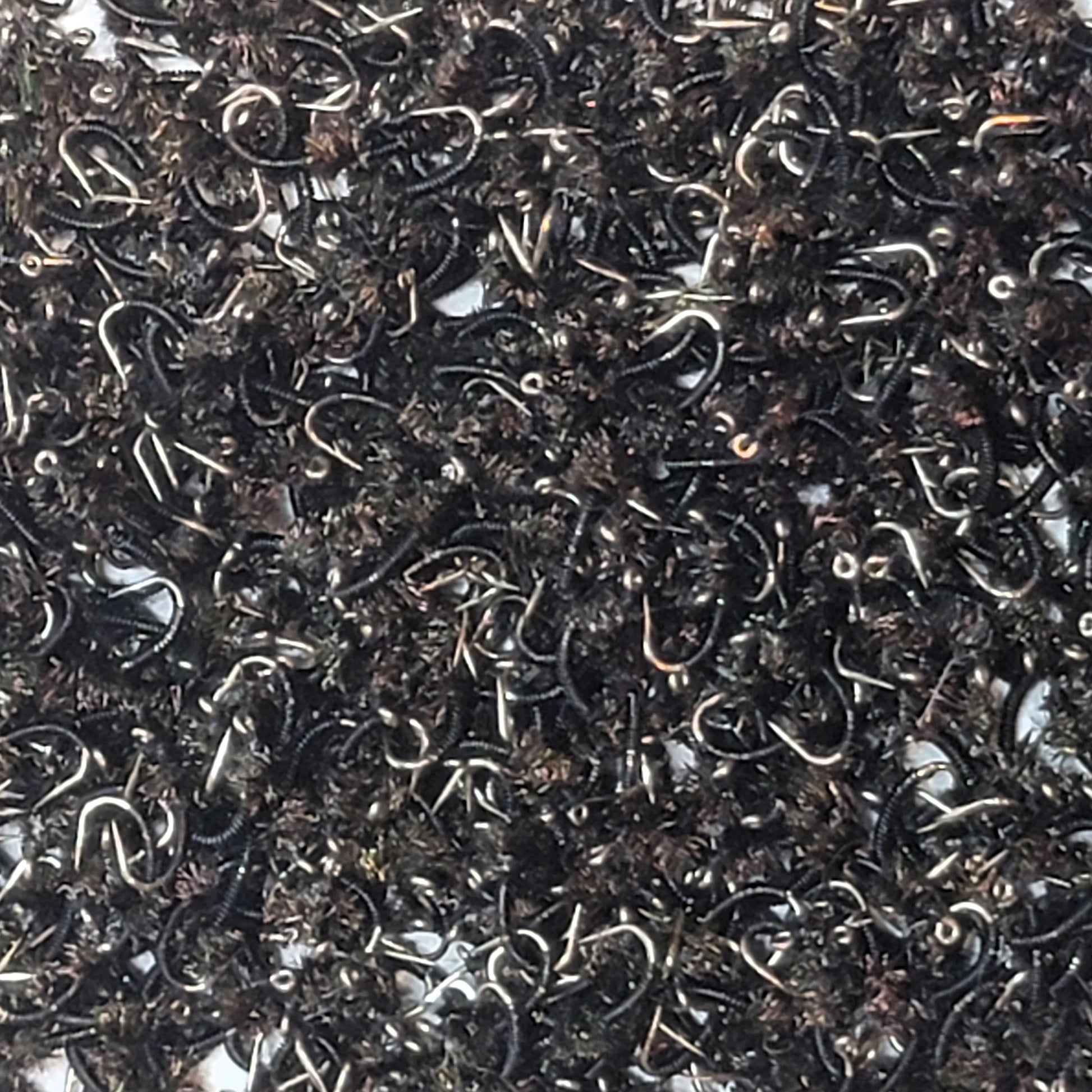Golden Tippet Fly Co.
Brassie - Black - Size #16 (Pack of 3)
Brassie - Black - Size #16 (Pack of 3)
Couldn't load pickup availability
The Black Brassie is a simple yet effective fly pattern that is primarily used for trout fishing. It is a variation of the traditional Brassie, which is known for its wire-wrapped body that sinks quickly and reflects light to attract fish. The Black Brassie, as the name suggests, uses black wire to give the fly a darker, more subdued appearance.
Hook: The Black Brassie is usually tied on a standard nymph hook, with sizes ranging from about #16 to #22, suitable for matching various aquatic insects, particularly midge larvae. The Golden Tippet Brassie is tied on a #16.
Thread: The tying process begins with a fine black thread that is used to secure all materials to the hook and create a smooth underbody. The thread is strong enough to hold the wire in place but thin enough not to create bulk.
Ribbing: The main body of the Black Brassie is created by wrapping fine black copper wire along the shank of the hook. The wire should be wrapped tightly and evenly from the rear of the hook to just behind the eye, creating a segmented appearance that mimics the natural segmentation of insect larvae.
Thorax (optional): The Golden Tippet variations of the Black Brassie include a thorax made from peacock herl to give the fly a slightly bulkier profile and add a touch of iridescence or color contrast.
Head: The head of the fly is formed by the tying thread used at the beginning. After wrapping the wire body, the thread is used to secure the wire in place behind the hook eye and then finished with a whip finish or half hitches to create a small, neat head.
Finish: A drop of head cement or clear nail polish can be applied to the thread wraps at the head for added durability.
The Black Brassie's simplicity makes it a versatile pattern that can be fished in a variety of ways. It can be dead drifted along the bottom, swung through currents, or even fished beneath a dry fly in a dry-dropper setup. Its dark coloration can make it particularly effective on overcast days, in off-colored water, or when fish are keyed in on darker insects.
Share
